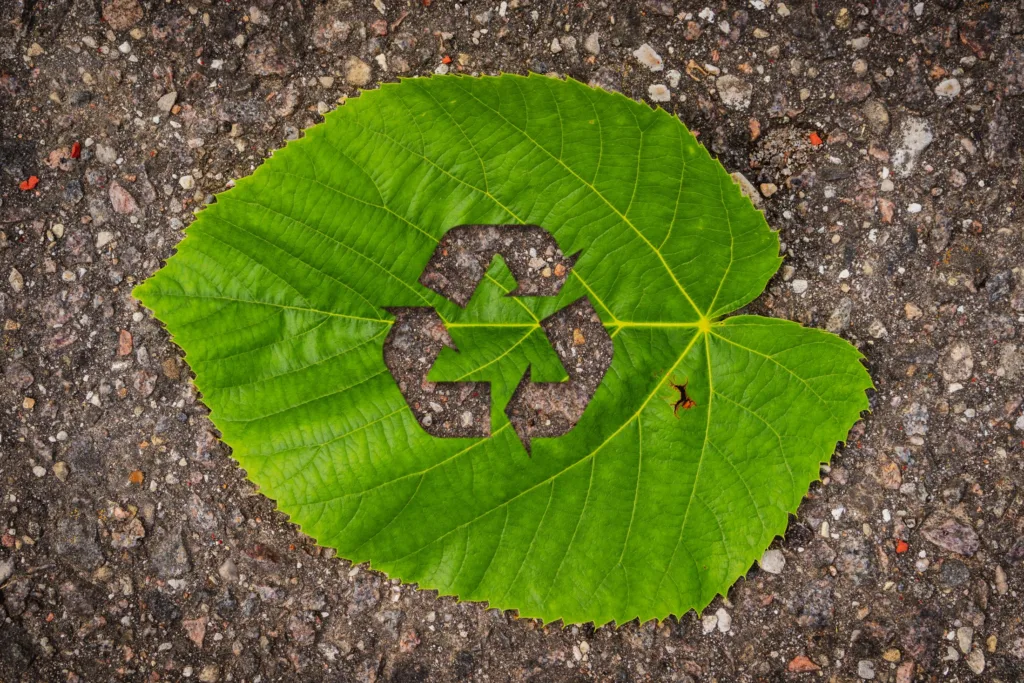Paving is an essential part of our infrastructure, providing us with smooth and durable roads, driveways, and parking lots. However, the production and maintenance of asphalt and concrete surfaces can be resource-intensive and generate significant waste. As a result, paving materials are increasingly being recycled and reused to address these environmental concerns. Keep reading to learn the process of recycling paving materials and its environmental benefits.

Recycling Asphalt Pavement
Recycling asphalt pavement is a well-established practice in the construction industry. The process typically involves the following steps:
1. Pavement Milling: The top layer of the existing asphalt pavement is removed using milling machines. This process not only prepares the pavement for recycling but also helps improve surface smoothness.
2. Crushing and Screening: The milled asphalt is then crushed into smaller pieces using specialized equipment. This crushed material, known as reclaimed asphalt pavement (RAP), is screened to remove any oversized debris or contaminants.
3. Blending: The RAP is combined with new asphalt binder and aggregate materials to create a recycled asphalt mix. This blend is carefully designed to meet specific performance and quality standards.
4. Production: The recycled asphalt mix is produced at an asphalt plant, where it undergoes heating and mixing processes. The resulting material is then transported to the construction site.
5. Paving: The recycled asphalt mix is laid down on the road or surface to be paved using conventional paving equipment. It is compacted to achieve the desired thickness and density.
Benefits of Asphalt Recycling
Recycling asphalt pavement offers several environmental and economic benefits:
- Resource Conservation: Recycling asphalt reduces the demand for new raw materials like aggregates and asphalt binder, conserving natural resources.
- Energy Savings: Producing recycled asphalt mix typically requires less energy compared to producing new asphalt from scratch.
- Cost-Effective: Using RAP in asphalt mixtures can lower construction and maintenance costs, making it an economical choice.
- Reduced Waste: Recycling diverts old pavement materials from landfills, reducing waste and conserving landfill space.
Recycling Concrete Pavement
Concrete pavement recycling is another sustainable practice in the construction industry. The process involves the following steps:
1. Demolition: The existing concrete pavement is broken into smaller pieces using heavy equipment like crushers or hydraulic hammers.
2. Sorting and Cleaning: The broken concrete is sorted to remove any contaminants, such as rebar or other metal elements. It is then cleaned to remove dirt and other debris.
3. Crushing and Screening: The cleaned concrete is crushed into smaller pieces and screened to produce recycled concrete aggregate (RCA). RCA is used as a replacement for natural aggregate in new concrete mixes.
4. New Concrete Production: The RCA is mixed with fresh concrete to create new concrete mixtures. The quality and properties of the recycled concrete mix are carefully monitored to meet project specifications.
Benefits of Concrete Recycling
Concrete pavement recycling offers similar environmental and economic advantages:
- Resource Conservation: Recycling concrete conserves natural resources by reducing the need for new aggregates.
- Reduced Landfill Waste: Recycling concrete diverts construction and demolition waste from landfills, prolonging landfill life and reducing disposal costs.
- Energy Savings: The energy required to produce RCA is generally lower than that needed for new aggregate extraction and processing.
- Cost Savings: Using RCA can result in cost savings for construction projects.
Pavement Recycling from Got Paving
Recycling paving materials like asphalt and concrete is an environmentally responsible practice that helps conserve resources, reduce waste, and lower the carbon footprint of construction projects. Let the paving experts of Got Paving recycle your old pavement or help your project by providing high-quality RAP or RCA. Contact us now to learn more.



